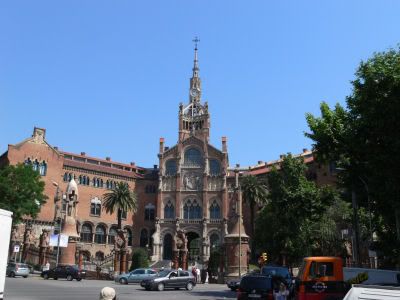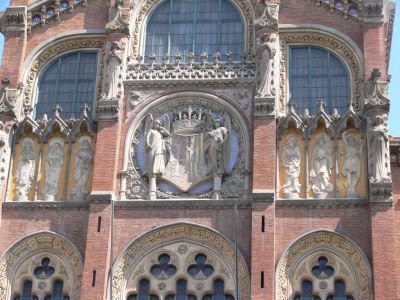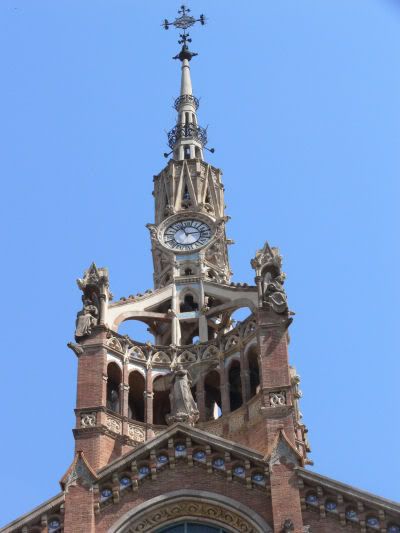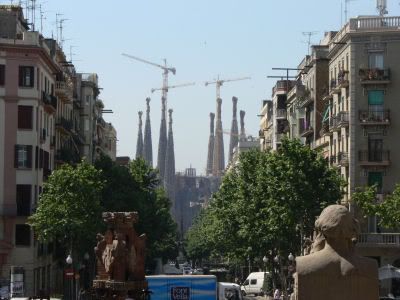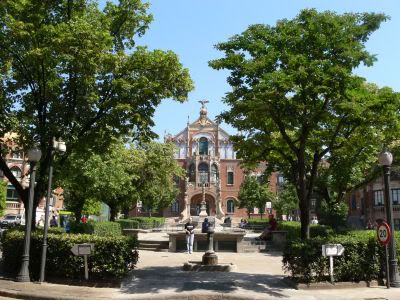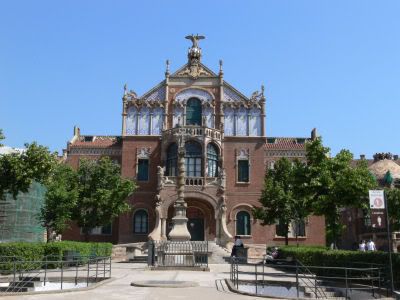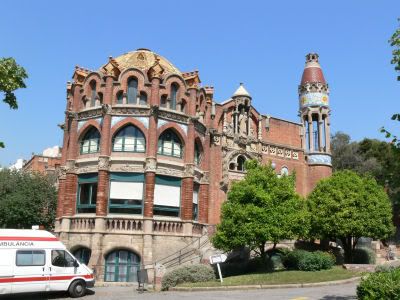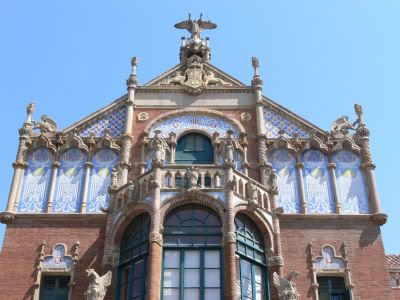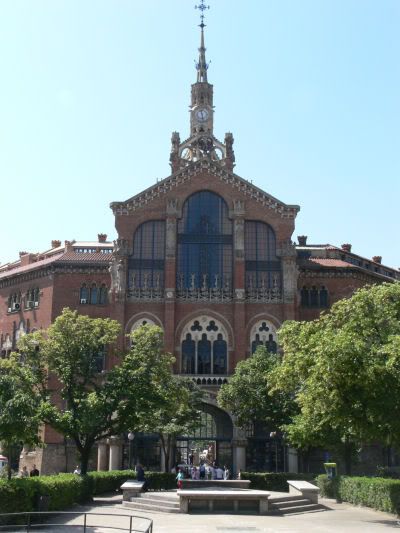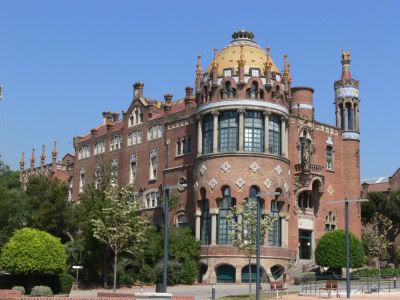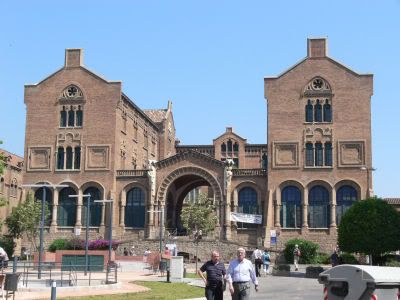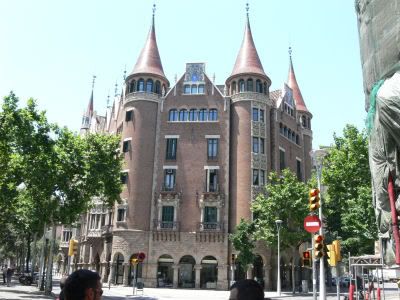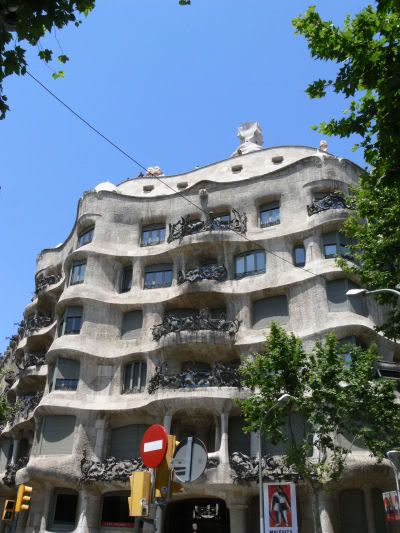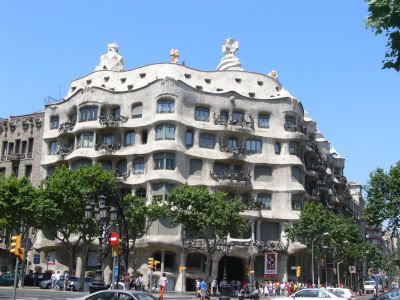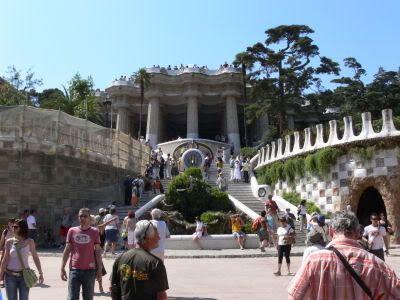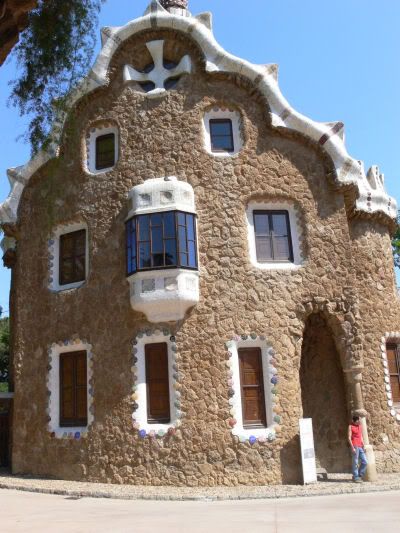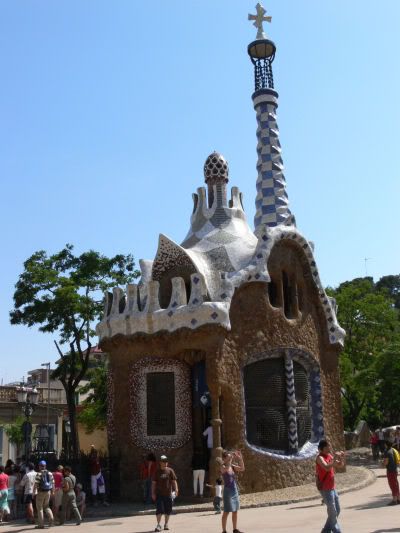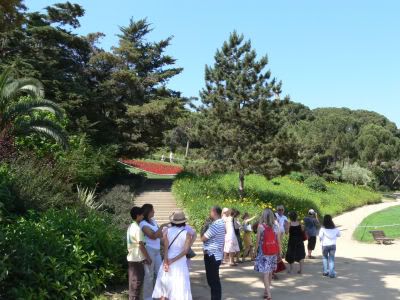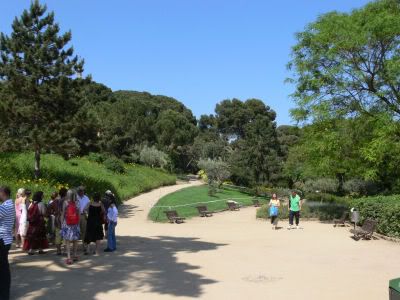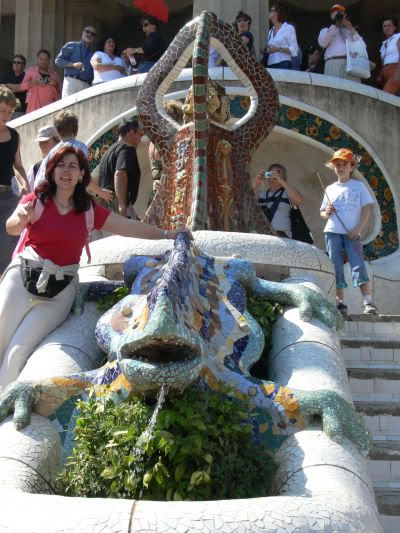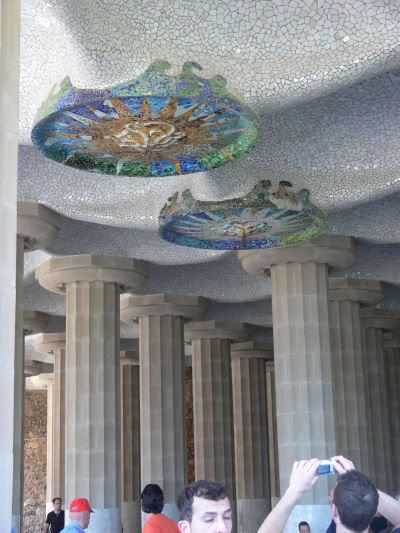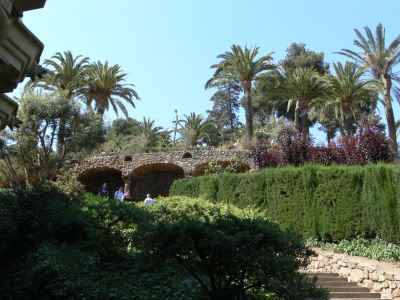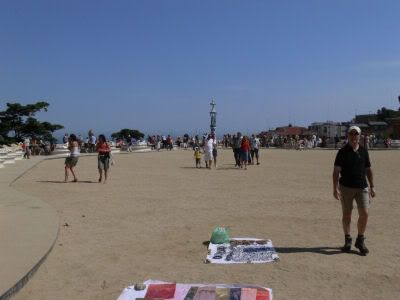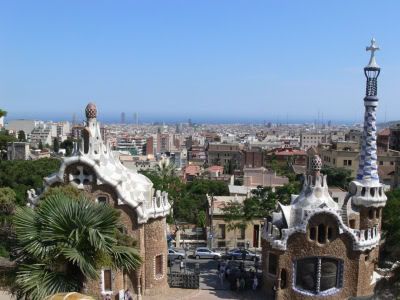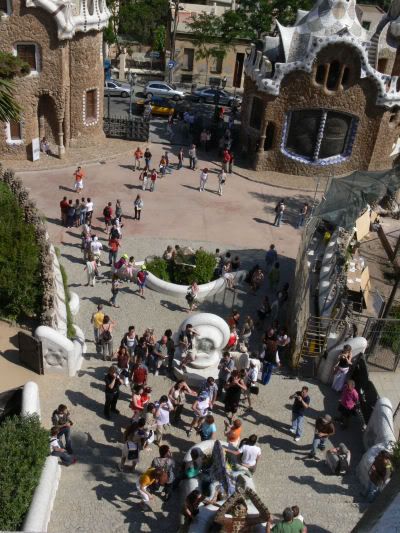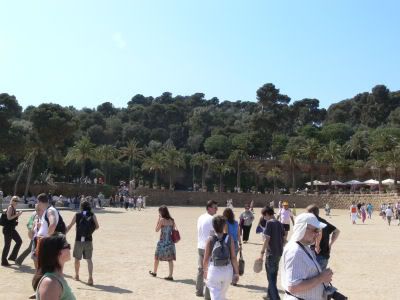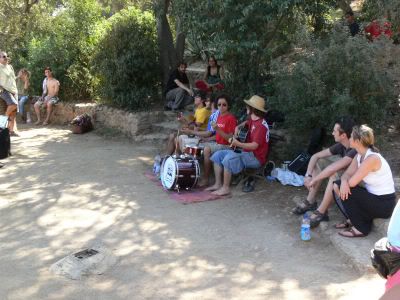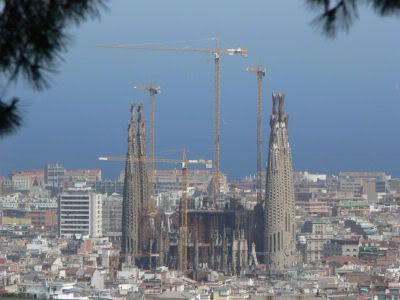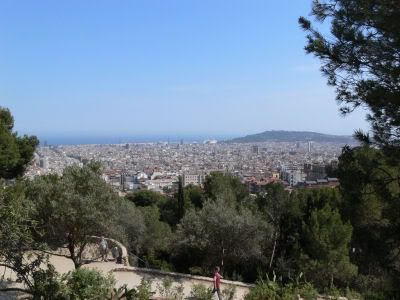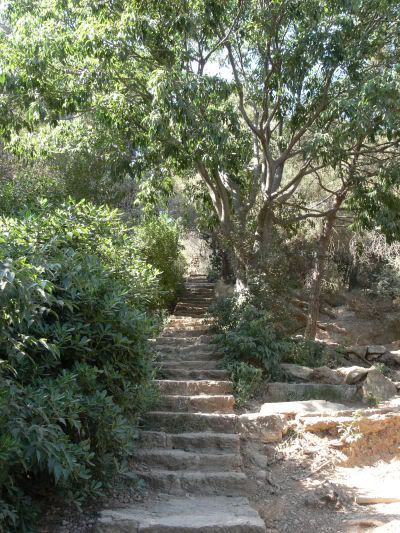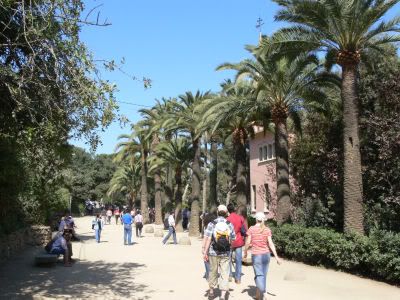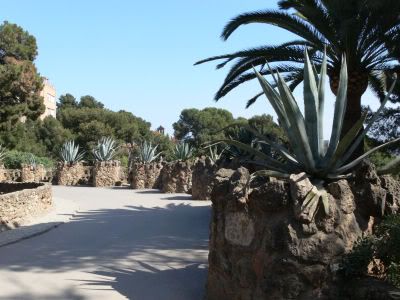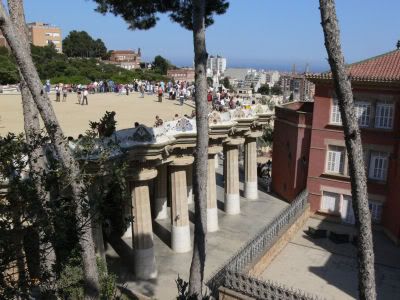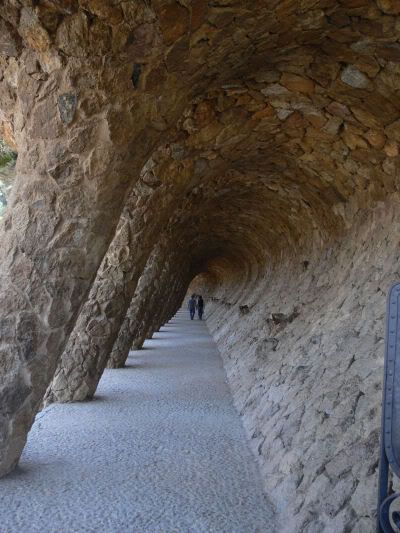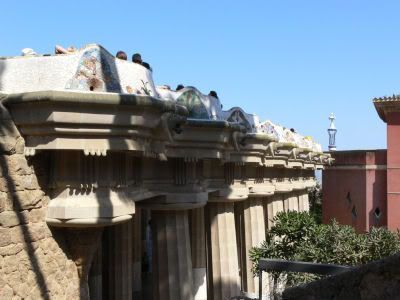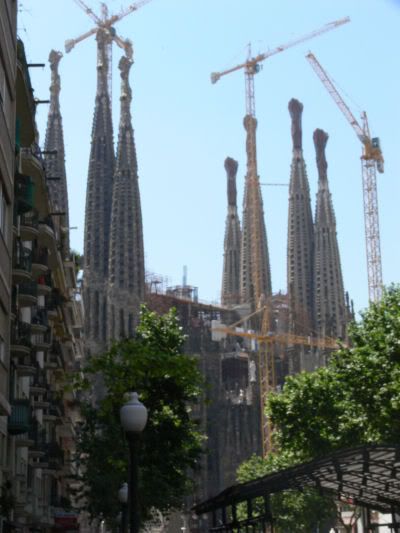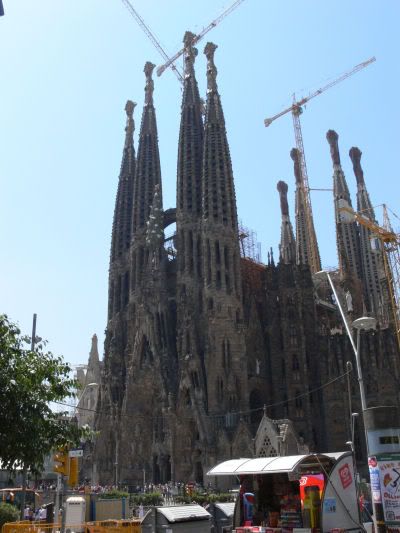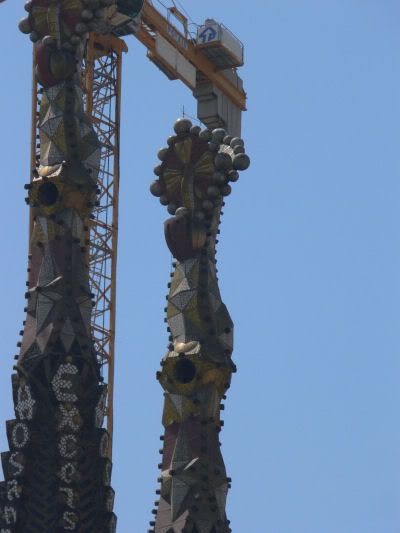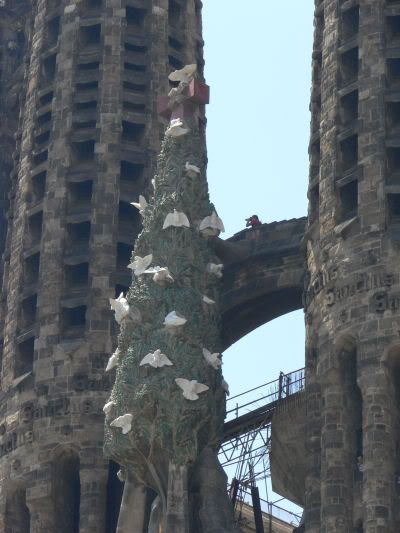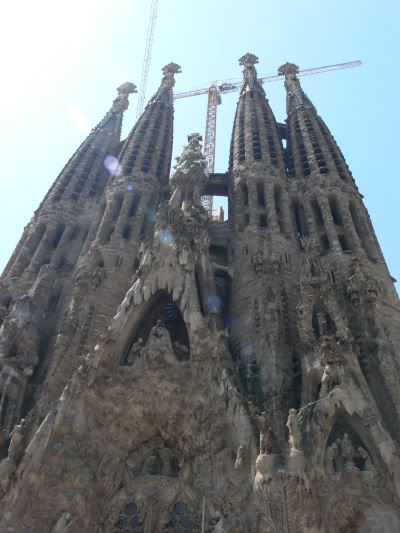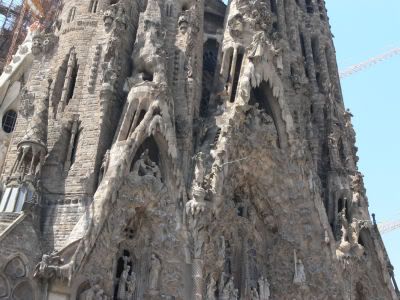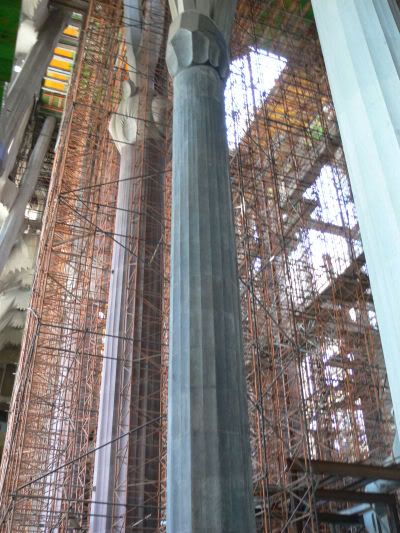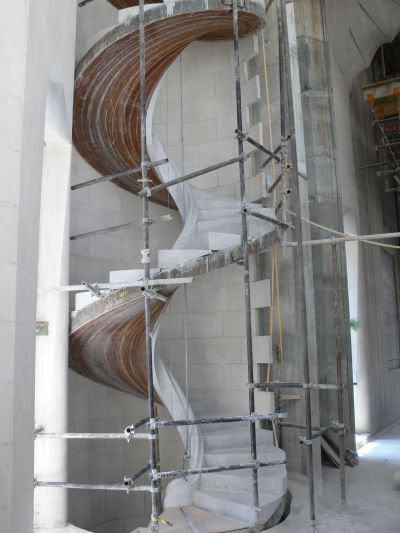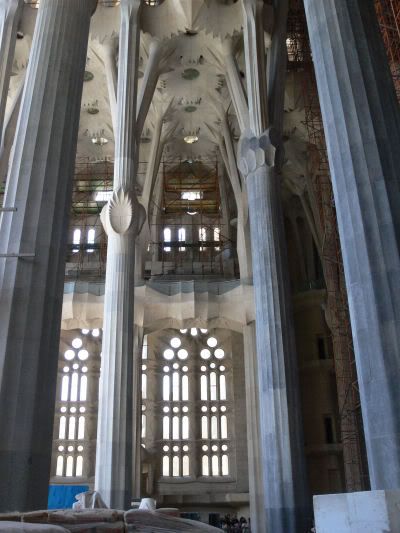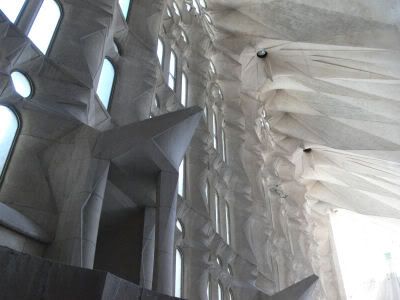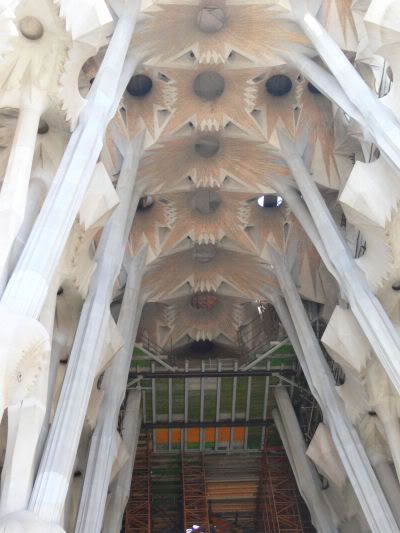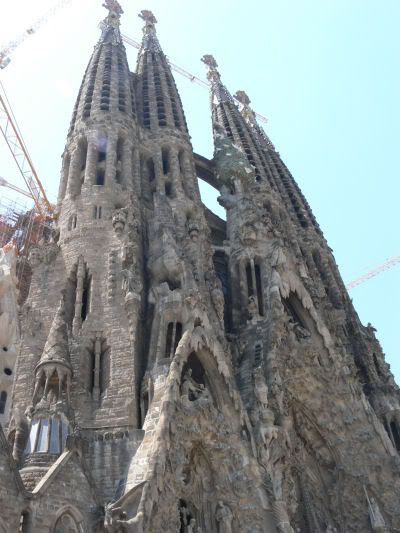Barcelona Trip (26-28 May 2006) - Part 4: Montjuïc and Final Thoughts
Last but not the least is Montjuïc, a hill on the opposite coast of Port Vell. Translated from medieval Catalanian into "Hill of the Jews", Montjuïc is the location of the 1992 Summer Olympics that was hosted by Barcelona. This is where most of the Olympic facilities are situated, along with the Olympic park.
We began at one side of the hill, the Placa de Espanya where we saw the magnificent Palau Nacional, currently used as the National Art Museum of Catalonia or Museu Nacional d'Art de Catalunya:
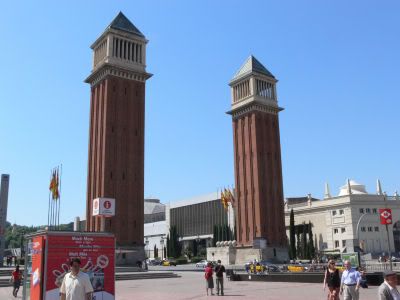
The twin bell towers that guard the entrance
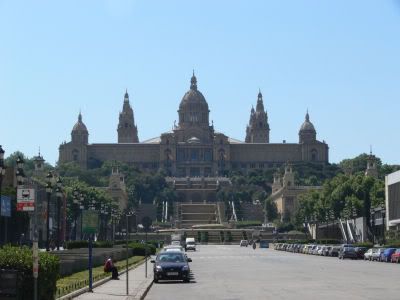
The magnificent palace
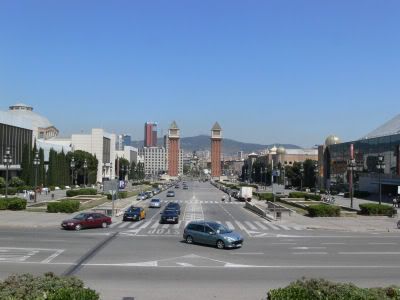
The view of the square after just 1 flight of steps
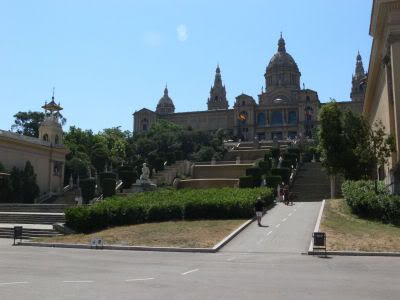
It's really quite tourist-friendly: see the escalators?
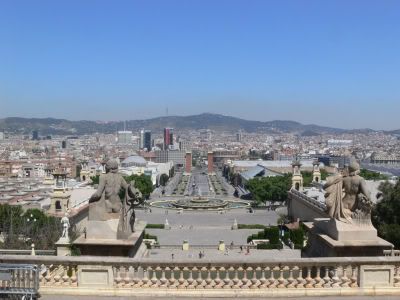
View from even higher up
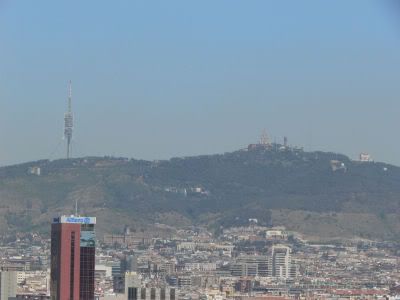
And the view from the top
I wasn't panting when I reached the top of this hill, thanks to all the escalators built. Very convenient indeed, especially in the hot sun.
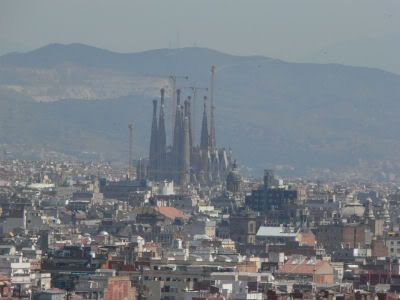
Close-up of the view of the Sagrada Familia. It's so big you can see it from any high place in the region
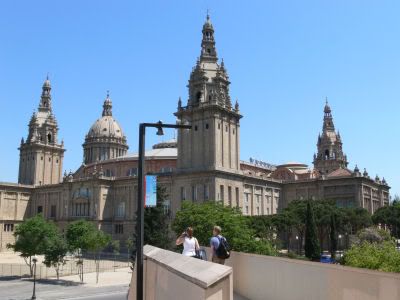
The other side of the palace
Oh, I forgot, I went there the 2nd-last night:
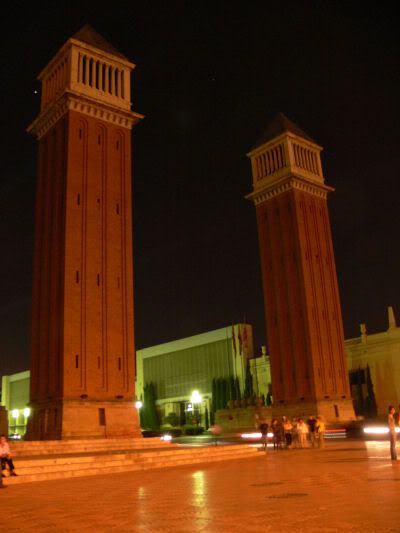
The bell towers again
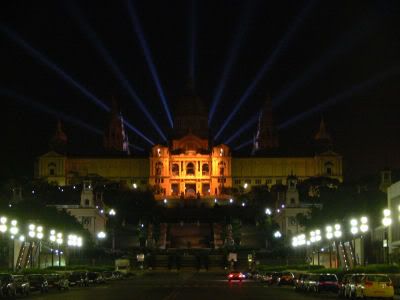
Magnificent, isn't it? No wonder they say that lighting is very important
Anyway, moving on, there is an Olympic statue:
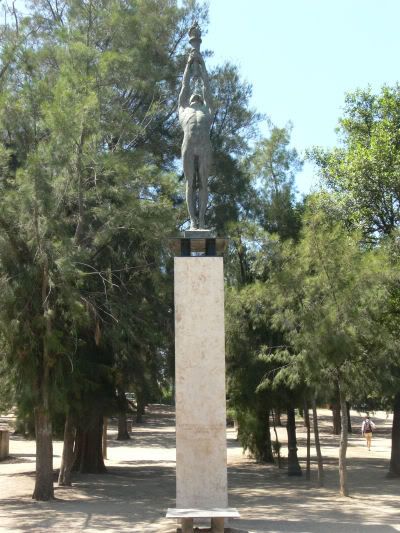
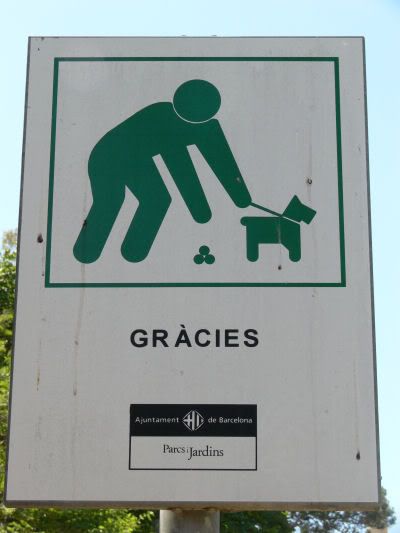
I thought this sign was interesting
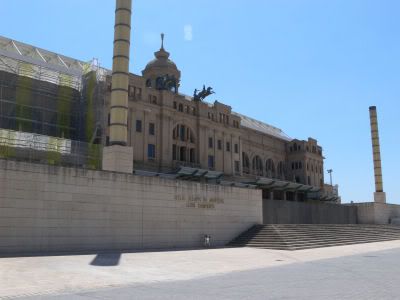
Guess what this is. No, it's not some palace... wrong again, it's not a castle... what? No no no! This is the Olympic stadium!
The Estadi Olimpic Lluis Companys was originally built for the 1929 Expo in Barcelona and rebuilt in 1989 into a stadium to be used for the 1992 Summer Olympics. Named after Lluís Companys i Jover, a politician during the Second World War, the stadium houses 56,000 people (more than half of the 98,000-seater Camp Nou of FC Barcelona) and has been the home of RCD Espanyol since 1998.
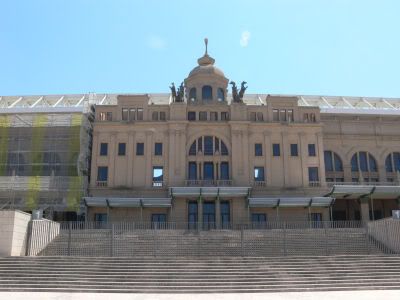
The main facade
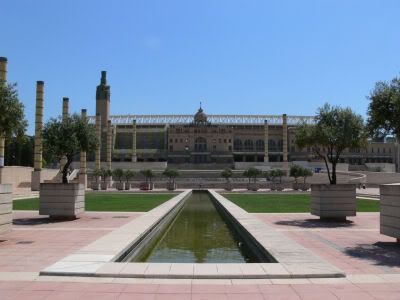
The facade from across the park
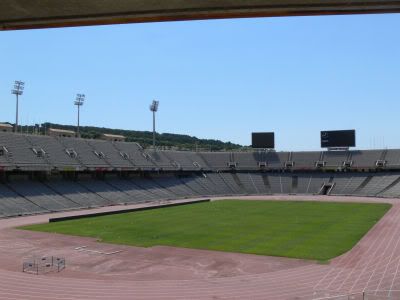
Inside the stadium...
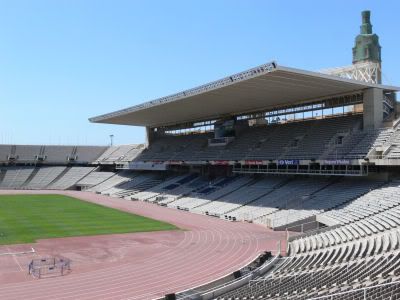
And a view of the grand stand
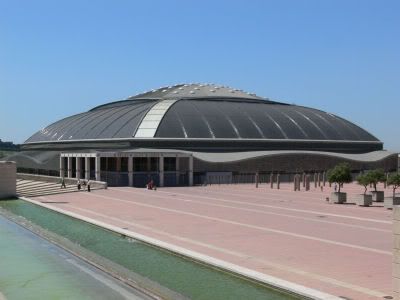
The Palau Sant Jordi
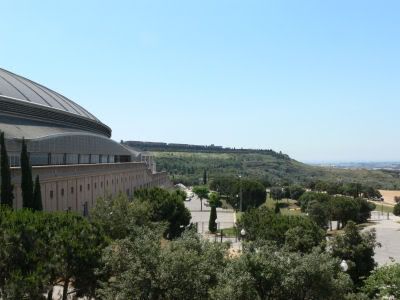
A view of the castle further up the hill
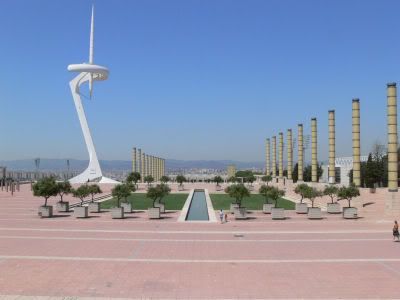
View of the square from the main entrance to the stadium
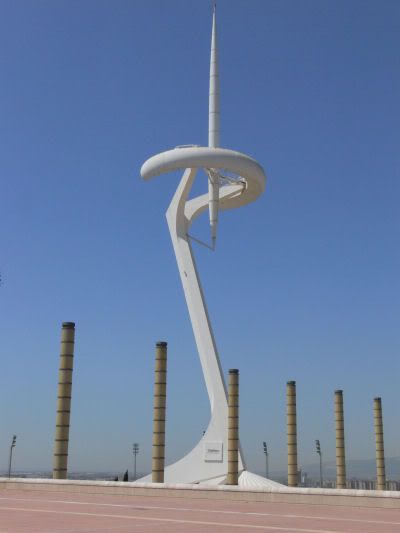
A close-up of the Torre Telefónica or Montjuic Communications Tower. This was used to broadcast the Olympic games from here and is a symbol of an athlete holding the Olympic flame. It was designed by Santiago Calatrava
Photobucket: Montjuïc
Final Thoughts:
So that was it for the wonderful Barcelona. Too bad we had to catch a plane back to München and too bad I had to work, if not, I'd loved to stay there just to relax for another week or so. I'd say this is easily one of the best places I've been to so far. Anyone within a 500km-radius of Barcelona should go there, I say! It's worth the time, effort and communication barrier to drop by this beautiful and amazing city.
We began at one side of the hill, the Placa de Espanya where we saw the magnificent Palau Nacional, currently used as the National Art Museum of Catalonia or Museu Nacional d'Art de Catalunya:

The twin bell towers that guard the entrance

The magnificent palace

The view of the square after just 1 flight of steps

It's really quite tourist-friendly: see the escalators?

View from even higher up

And the view from the top
I wasn't panting when I reached the top of this hill, thanks to all the escalators built. Very convenient indeed, especially in the hot sun.

Close-up of the view of the Sagrada Familia. It's so big you can see it from any high place in the region

The other side of the palace
Oh, I forgot, I went there the 2nd-last night:

The bell towers again

Magnificent, isn't it? No wonder they say that lighting is very important
Anyway, moving on, there is an Olympic statue:


I thought this sign was interesting

Guess what this is. No, it's not some palace... wrong again, it's not a castle... what? No no no! This is the Olympic stadium!
The Estadi Olimpic Lluis Companys was originally built for the 1929 Expo in Barcelona and rebuilt in 1989 into a stadium to be used for the 1992 Summer Olympics. Named after Lluís Companys i Jover, a politician during the Second World War, the stadium houses 56,000 people (more than half of the 98,000-seater Camp Nou of FC Barcelona) and has been the home of RCD Espanyol since 1998.

The main facade

The facade from across the park

Inside the stadium...

And a view of the grand stand

The Palau Sant Jordi

A view of the castle further up the hill

View of the square from the main entrance to the stadium

A close-up of the Torre Telefónica or Montjuic Communications Tower. This was used to broadcast the Olympic games from here and is a symbol of an athlete holding the Olympic flame. It was designed by Santiago Calatrava
Photobucket: Montjuïc
Final Thoughts:
So that was it for the wonderful Barcelona. Too bad we had to catch a plane back to München and too bad I had to work, if not, I'd loved to stay there just to relax for another week or so. I'd say this is easily one of the best places I've been to so far. Anyone within a 500km-radius of Barcelona should go there, I say! It's worth the time, effort and communication barrier to drop by this beautiful and amazing city.

